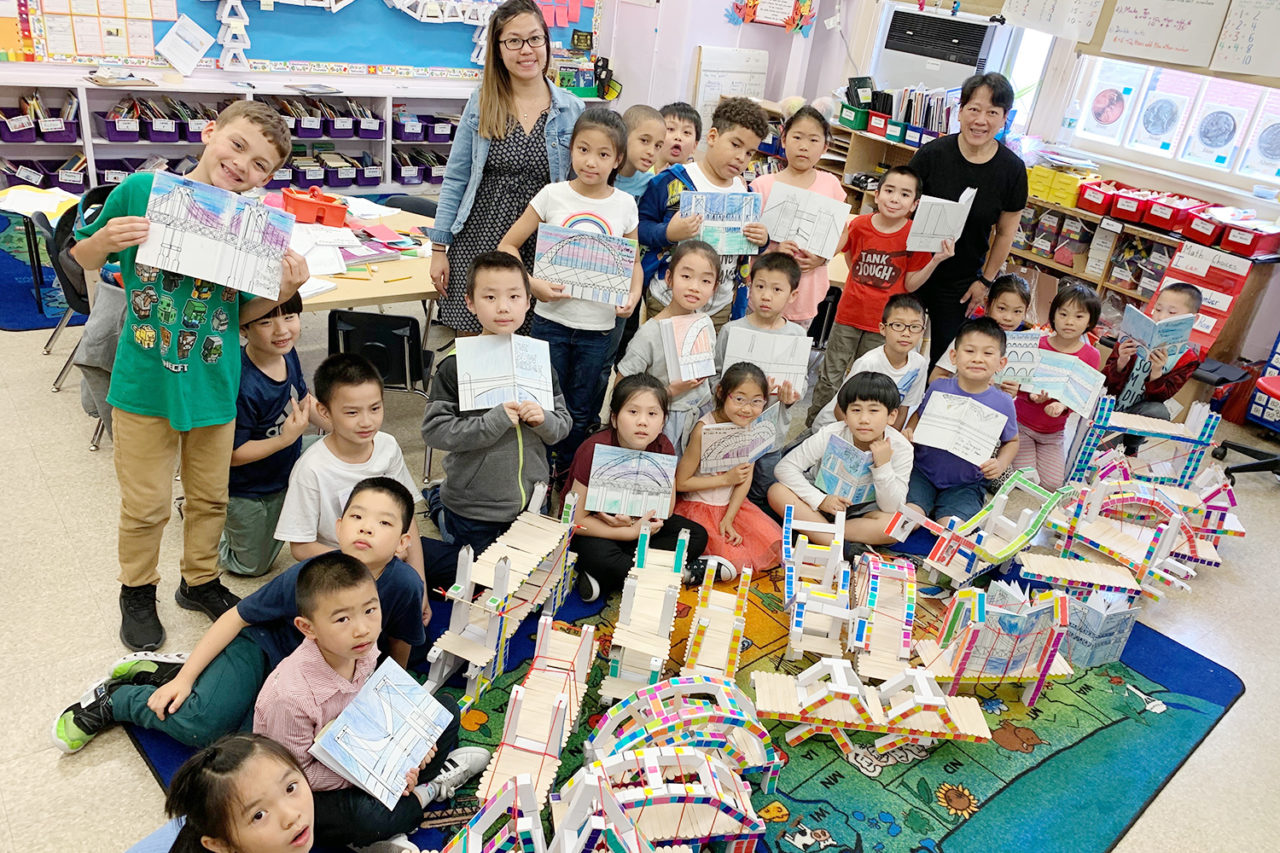by Center for Architecture
The Center for Architecture is pleased to announce that we have been approved for a $25,000 grant from the National Endowment for the Arts to support our in-school Learning By Design:NY classroom residency program during the 2022-23 school year. Learning By Design:NY (LBD:NY) is a hands-on, project-based program that builds students’ visual literacy, design thinking, and creativity through interdisciplinary architecture projects that enrich and expand classroom studies. This project is one of 1,125 across America, totaling more than $26.6 million, that were selected during the second round of Grants for Arts Projects fiscal year 2022 funding.
“The National Endowment for the Arts is proud to support arts and cultural organizations throughout the nation with these grants, including the Center for Architecture, providing opportunities for all of us to live artful lives,” said NEA Chair Maria Rosario Jackson, PhD. “The arts contribute to our individual well-being, the well-being of our communities, and to our local economies. The arts are also crucial to helping us make sense of our circumstances from different perspectives as we emerge from the pandemic and plan for a shared new normal informed by our examined experience.”
During the 2022-23 school year, we expect LBD:NY to serve 2,500 students and teachers in approximately 25 New York City schools.LBD:NY enjoys a high repeat rate of 80 to 85 percent . 40 to 50% of our partners are low-income Title One schools with high percentages of students of coloror in underserved neighborhoods. NEA support is critical to enabling us to provide program subsidies to these schools to remove barriers to participation and ensure that the program reaches a diverse audience.
LBD:NY provides students with a holistic arts experience that not only achieves New York State and City Arts Standards, but strengthens skills and knowledge in ELA, social tudies, and STEAM. Programs are developed and taught by the Center for Architecture’s Design Educators in collaboration with classroom teachers. Residencies follow a sequential four-phase methodology. During the planning phase, Center for Architecture staff and school partners define the topic and scope of the residency, customize learning objectives and outcomes, and plan an interdisciplinary design program that integrates with classroom units of study. The foundation phase introduces students to design vocabulary and concepts through guided observation and analysis of works of architecture and design activities that build knowledge and understanding of the residency topic. In the application phase, students apply what they have learned to create their own design projects. Programs culminate in the reflection and assessment phase, where students present their projects to parents, peers, and teachers, followed by program and participant evaluations.
LBD:NY program themes vary to target key areas of study and classroom needs and interests. Many focus on the school’s local built environment, developing awareness and appreciation for America’s cultural heritage and communities. Others focus on the architecture of other places and peoples, helping students explore and understand traditions and cultures other than their own. All programs nurture their abilities as design thinkers, opening their eyes to the role of design in their daily lives, and equipping them with the skills and knowledge to take an active role in shaping their built environment. Students are also introduced to architecture as a potential career, an important first step in diversifying the profession Successful lessons and activities from these programs are added to the free resource materials on our website, sharing our innovative curricula and best practices with educators, schools, and institutions across the country.
